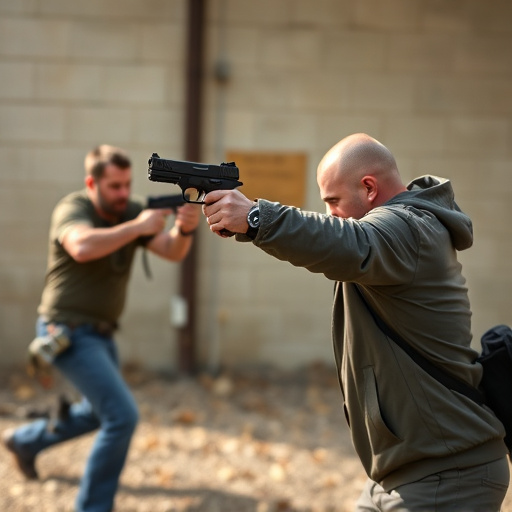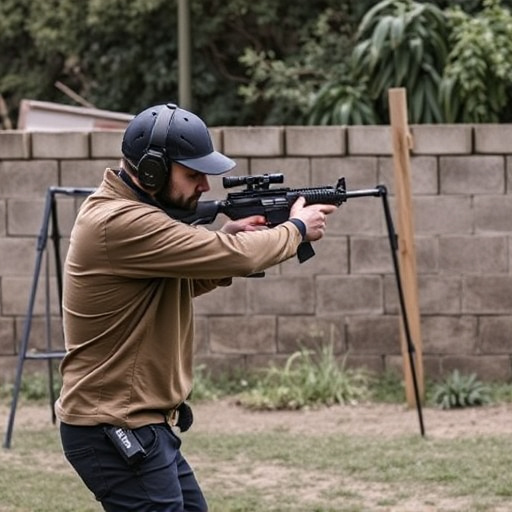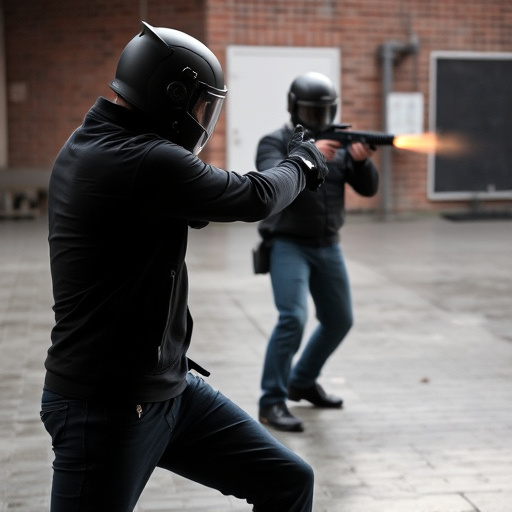Unveiling Stun Gun Power: Spread Pattern Analysis for Safety
Understanding electrical current flow is crucial for developing effective and safe Police Grade Stun…….
Understanding electrical current flow is crucial for developing effective and safe Police Grade Stun Gun Options. High-voltage, low-amperage pulses disrupt muscle and nervous system function, with current spread patterns analyzed to optimize charge distribution and minimize collateral damage. Advanced technologies like electric field (EF) or direct current (DC) systems, coupled with safety features and intelligent design, ensure reliability in tactical operations. Analysis using computer simulations, scanning electron microscopy (SEM), and data software aids in refining stun gun design for safer application while meeting industry standards.
Electrical current spread patterns are crucial in understanding how stun guns work, especially police-grade options. This article delves into the intricate world of stun gun design and functionality, exploring the science behind their effectiveness. We’ll analyze the key features and technologies that set apart top-tier models, focusing on the analysis of current spread patterns using advanced techniques and tools. Additionally, we’ll discuss practical applications and safety considerations for those seeking reliable Police Grade Stun Gun options.
- Understanding Electrical Current and Its Behavior
- The Science Behind Stun Gun Design and Functionality
- Police Grade Stun Guns: Key Features and Technologies
- Analyzing Spread Patterns: Techniques and Tools
- Practical Applications and Safety Considerations for Current Spread Analysis
Understanding Electrical Current and Its Behavior

Understanding Electrical current is key to comprehending how a stun gun, such as those offered by police grade manufacturers, functions. When an electric charge is introduced into a conductive material like human flesh, it seeks the path of least resistance, flowing in a direct line from the positive to negative terminal. This phenomenon creates a temporary disruption in the body’s electrical balance, resulting in muscle paralysis and temporary incapacitation.
Analyzing current spread patterns allows experts to assess the effectiveness of stun gun designs. By studying how electricity propagates through different body types and tissues, manufacturers can optimize the distribution of charge, ensuring maximum impact with minimal collateral damage. This focus on precise current delivery is crucial for developing safe yet powerful Police Grade Stun Gun Options.
The Science Behind Stun Gun Design and Functionality

The design and functionality of a stun gun are rooted in electrical science, specifically the way electrical current spreads and affects the human body. Stun guns, also known as electronic control devices (ECDs), operate by delivering high-voltage, low-amperage electrical pulses through two or more metal probes into the target’s body. This sudden jolt of electricity disrupts the normal functioning of muscles and the nervous system, causing temporary incapacitation. The effect is achieved by utilizing advanced circuitry that generates precise electrical pulses, which are then channeled through a series of conductors to the probe tips.
Police-grade stun guns stand out for their robust design, reliability, and power. These devices often feature sturdy construction to withstand rough handling and durable materials to ensure longevity. They offer various voltage and current settings, allowing users to adjust the intensity of the shock based on the situation and target. Advanced models incorporate safety features like automatic shut-off mechanisms and adjustable stun modes, providing law enforcement and self-defense enthusiasts with versatile and effective tools. The science behind their design continuously evolves, ensuring that stun guns remain a reliable option for personal safety, backed by the demand for Police Grade Stun Gun Options in today’s security landscape.
Police Grade Stun Guns: Key Features and Technologies

Police-grade stun guns are designed for professional law enforcement use, featuring advanced technologies to ensure effectiveness and safety during tactical operations. These stun guns offer a range of key features that set them apart from consumer models, making them indispensable tools for officers on the frontlines. One of the primary considerations when selecting a police-grade stun gun is the type of current delivery system. Options include electric field (EF) technology and direct current (DC) systems, each with its own advantages in terms of shock intensity, range, and safety features.
Modern stun guns incorporate intelligent design elements, such as advanced safety mechanisms to prevent accidental discharge and smart triggers that adapt to various physical interactions. Additionally, some models come equipped with tactical lights and laser sights for improved visibility and precision during low-light or high-stress situations. The market offers diverse Police Grade Stun Gun Options, catering to different user needs and preferences, ensuring officers have the right tool for any scenario they may encounter while maintaining control and safety.
Analyzing Spread Patterns: Techniques and Tools

Analyzing spread patterns is a critical aspect of understanding how electrical current flows and interacts with various materials, especially in the context of Police Grade Stun Gun Options. This analysis involves sophisticated techniques and tools designed to provide detailed insights into the behavior of electricity. One commonly used method is computer simulations that model the complex interactions between current and conductors, offering a virtual laboratory for testing different scenarios without physical risks. These simulations are instrumental in predicting how stun guns, for instance, distribute electrical energy upon impact, ensuring safer design and application.
Additionally, experimental techniques like scanning electron microscopy (SEM) play a pivotal role. SEM enables visual representation of current spread by capturing high-resolution images of current density distribution on different surfaces. This visual data provides tangible evidence of how electricity moves and can help identify optimal materials or design choices for stun gun components. Moreover, the integration of advanced data analysis software allows researchers to quantify and interpret results, further refining our understanding of electrical current dynamics.
Practical Applications and Safety Considerations for Current Spread Analysis

In the realm of electrical safety, current spread analysis is a powerful tool that finds practical applications in various fields. For instance, understanding current flow is crucial when evaluating Police Grade Stun Gun Options. By studying how electricity spreads across different materials and surfaces, manufacturers can design stun guns with optimized jolts, ensuring effective immobilization while minimizing risks. This analysis helps in achieving the right balance between power and safety, which is paramount for law enforcement officers equipped with such devices.
Moreover, current spread patterns are essential considerations in preventing electrical hazards. In the context of stun guns, proper current distribution can reduce the likelihood of collateral damage or accidental injuries. Safety protocols often emphasize the importance of this analysis to mitigate risks associated with high-voltage equipment. As technology advances, continuous research into current spread analysis allows for the development of safer Police Grade Stun Gun Options, catering to the evolving needs of law enforcement while upholding stringent safety standards.
Electrical current spread pattern analysis is a crucial aspect of understanding the effectiveness and safety of police-grade stun guns. By delving into the behavior of current, we can optimize the design and functionality of these devices, ensuring they provide reliable protection while minimizing risks. The techniques and tools discussed in this article offer valuable insights into analyzing spread patterns, allowing for informed decisions when choosing among various Police Grade Stun Gun options available on the market today. Staying at the forefront of current science enables law enforcement professionals to make strategic choices that enhance their safety and effectiveness in the field.


